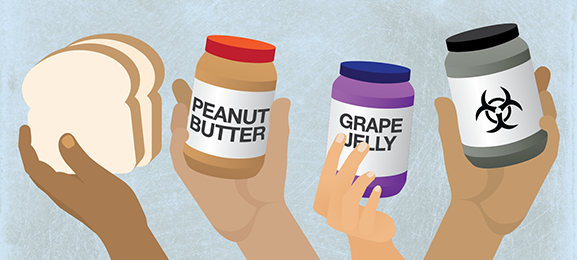Collaboration isn’t just good. It’s cool. Hip. All the smart companies, with their low walls and open conference spaces, are doing it. It generates ideas, brings people together, enhances engagement … all good things we want in our workplace.
However, collaboration isn’t always healthy. In fact, it can be toxic.
When used as a code word to mask detrimental behaviors, hide weaknesses, or avoid tough conversations, your team suffers. It happens more often than you think—maybe even in your own office. Check out the following list of 3 classic collaboration gaffes, as well as how you can remedy them:
TOXIC COLLABORATION MOVE #1: “The Shield”
Manager thinks: “I’m not sure how to have this tough conversation with you, so we’ll call a meeting and maybe the group will do it for me.” Collaboration isn’t a shield to hide behind. And it isn’t a place to pounce on someone whose idea you disagree with.
While you may not seek confrontation, great leaders are willing to have alignment conversations one-on-one and they know how to engage an individual with respect but with firmness. If you need to align a team member to a goal, don’t invite a group to be part of the discussion. Instead, be sincere in your care for the person, open to options that achieve the goal, while being candid and clear about expectations.
TOXIC COLLABORATION MOVE #2: “The Crutch”
Abundant collaboration sessions don’t foster creativity, they stifle it. An HBR study showed that “time spent by managers and employees in collaborative activities has ballooned by 50% or more.” Worse, those who are most collaborative get punished by it—invited to more and more meetings. The study showed that 20-35% of value-added collaboration came from just 3-5% of the employees.
Kick out the crutch by structuring meetings so all participate and have assignments, not just those “top collaborators.” Keep meetings brief, and defer to individual follow-up conversations rather than calling the entire group together for each new update.
TOXIC COLLABORATION MOVE #3: “The Wedge”
If you’re regularly pushing a team member to get more collaboration on projects in progress, what you may be unintentionally communicating is “I don’t trust you.” This is particularly true if added collaborators don’t have knowledge of the project.
Phrases like “getting buy in” and “socializing the idea” are legitimate and have their place. But if every project or deliverable needs to be passed from the mailroom to the boardroom for “collaboration purposes,” you may be creating a wedge between you and your direct report.
Use collaboration at key points in a project, and invite the right people to participate. But recognize that not everyone’s opinion is needed. Create a plan, then let that smart and talented individual do her thing.





